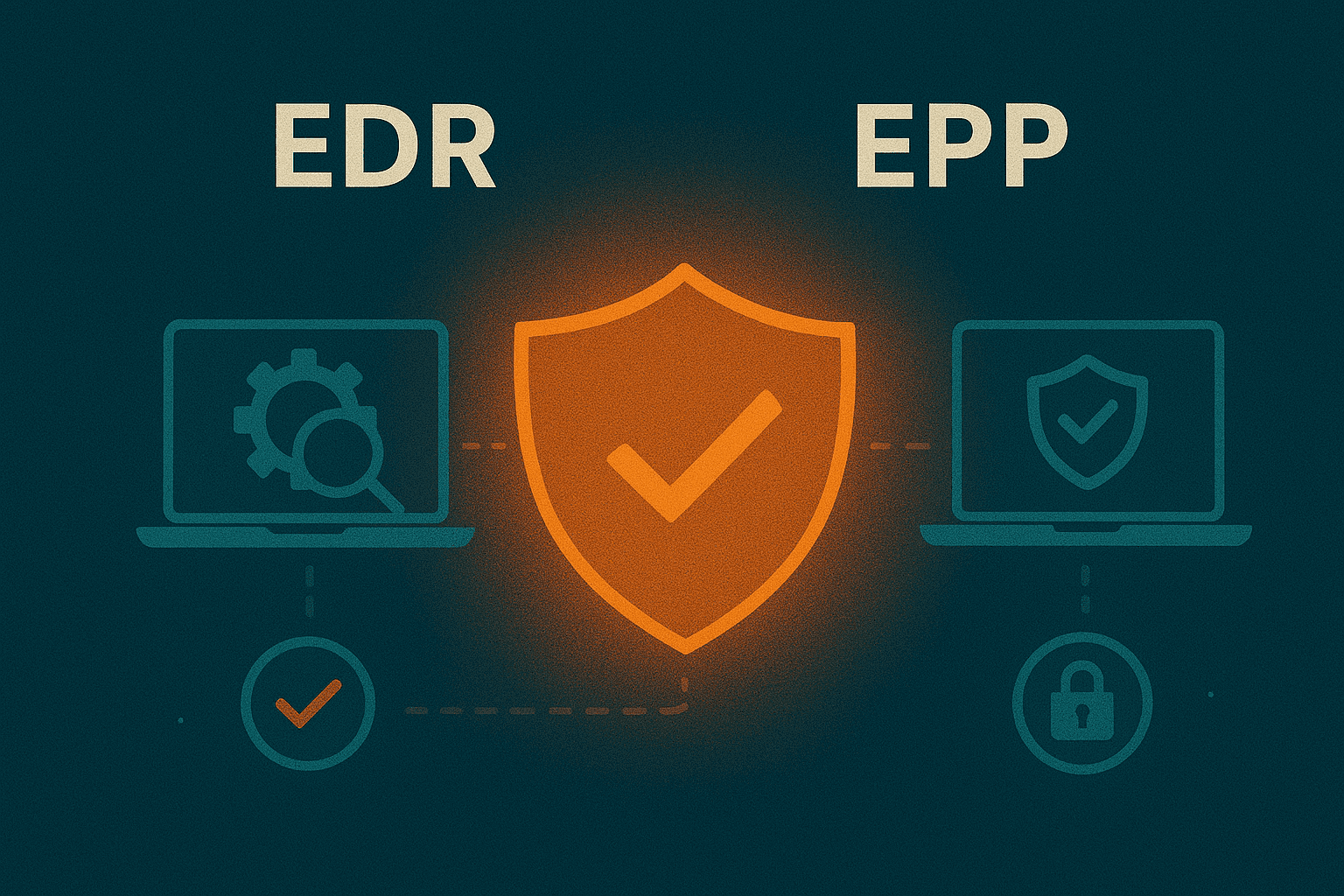In the crucial Endpoint Security pillar of defense, organizations must decide between traditional and next-generation tools to protect devices like laptops, servers, and mobile endpoints. The debate often centers on EDR vs. EPP: Endpoint Protection Platforms (EPP) and Endpoint Detection and Response (EDR). While both aim to secure devices, they fulfill fundamentally different functions, reflecting the shift from simple prevention to advanced detection and response.
1. Endpoint Protection Platform (EPP): The Classic Defense
EPP represents the evolution of traditional antivirus software. It is primarily a prevention-focused security solution designed to stop known threats and common malware before they can execute.
| EPP Key Characteristics | Description |
| Primary Goal | Prevent known threats and simple attacks from breaching the endpoint. |
| Technology | Signature-based detection, behavioral analysis, machine learning (ML) for file scanning, and sandboxing. |
| Action | Block and quarantine known malware based on file signatures or recognized malicious behavior patterns. |
| Use Case | Protecting against widespread, non-targeted commodity malware (e.g., standard viruses and Trojans). |
Limitation: EPP is highly effective against common, known threats, but it struggles against zero-day attacks, sophisticated fileless malware, and targeted threats that use advanced techniques to evade signature and simple behavioral checks.
2. Endpoint Detection and Response (EDR): The Hunter and Investigator
EDR is the modern, next-generation solution that goes beyond prevention. It is a continuous, detection and response-focused system designed to hunt for, investigate, and mitigate threats that have bypassed the initial perimeter defenses. EDR is critical for the Detect and Respond functions of any security strategy.
| EDR Key Characteristics | Description |
| Primary Goal | Detect, investigate, and contain advanced, stealthy, and fileless threats that EPP misses. |
| Technology | Continuous monitoring, full visibility logging, deep process tracing, behavioral analytics, and threat hunting tools. |
| Action | Record all activity, provide forensic data, enable remote containment (isolating the endpoint), and allow security analysts to roll back malicious changes. |
| Use Case | Identifying sophisticated, targeted attacks, internal threats, and providing the necessary data for a comprehensive Incident Response Plan (IRP). |
EDR is often cloud-based and provides security analysts with a powerful console to trace the root cause of an attack, see which user and process initiated the compromise, and stop it before it escalates into a full breach. This continuous recording capability is what distinguishes it from EPP.
3. EDR vs. EPP Comparison Summary
| Feature | EPP (Protection Platform) | EDR (Detection and Response) |
| Core Function | Stops known bad files. | Finds unknown malicious behavior. |
| Data Usage | Limited logging, focused on the security event. | Comprehensive, continuous logging of all endpoint activity. |
| Analyst Involvement | Low; automated quarantine. | High; requires skilled analysts for threat hunting and investigation. |
| Value to Security | High Prevention rate. | High Visibility and Containment speed. |
| Integration | Often integrated into EDR for a unified solution. | Mandatory for modern Zero Trust Architecture (ZTA), as it confirms endpoint integrity. |
4. The Modern Unified Approach
The most effective cybersecurity strategy does not choose between EPP and EDR; it integrates them into a unified system often referred to as Extended Detection and Response (XDR).
A unified solution uses the EPP component for automated, high-volume prevention, reducing the noise. It then relies on the EDR component to focus on the small number of sophisticated threats that slip through. This approach ensures you are protected against both commodity malware and advanced persistent threats (APTs).
By moving to EDR, organizations significantly boost their defensive posture, ensuring that when a breach occurs—a scenario that is anticipated in any mature security program—they have the necessary data and tools to rapidly eradicate the threat and minimize the overall business risk.

